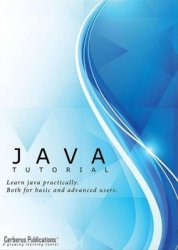Java Tutorial (Web Services)
- Добавил: literator
- Дата: 14-01-2019, 05:03
- Комментариев: 0
 Название: Java Tutorial (Web Services)
Название: Java Tutorial (Web Services) Автор: Cerberus Publications
Издательство: Amazon Digital Services LLC
ASIN: B01F2KTSD2
Год: 2016
Страниц: 198
Язык: английский
Формат: epub, pdf (conv)
Размер: 10.25 MB
In the early days of the Internet, Web applications delivered static webpages via HTML. Certainly, the development of websites was simpler; however, static content can quickly become outdated; thus, the content management of a website is important. In order to provide dynamic content to Web users, 2-tier web applications were realized with the introduction of the Common Gateway Interface (CGI), which retrieves content from external data resources, such as a database.
Nowadays, n-tier Web application architecture is commonly used. In this architecture, middleware or an application server is introduced to connect the Web server and the database more efficiently. The performance of an n-tier application is improved because Web servers, middleware and databases can be hosted by separate machines. Each tier can be replicated for the purposes of load balancing. Security is also improved because data is not stored on the Web or application server, which makes it harder for hackers to gain access into the database where data is stored.
The concept of a Web Service can be difficult to comprehend without seeing a concrete example of how a Web Service is created and used. The top-down approach starts with a WSDL file that describes the services. The top-down approach may increase the level of interoperability and allow more control of the WS, wehereas the bottom-up approach starts at the low level of the Java bean or enterprise Java bean (EJB) and is faster and easier.
Contents:
Скачать Java Tutorial: Creating Web Services
Внимание
Уважаемый посетитель, Вы зашли на сайт как незарегистрированный пользователь.
Мы рекомендуем Вам зарегистрироваться либо войти на сайт под своим именем.
Уважаемый посетитель, Вы зашли на сайт как незарегистрированный пользователь.
Мы рекомендуем Вам зарегистрироваться либо войти на сайт под своим именем.
Информация
Посетители, находящиеся в группе Гости, не могут оставлять комментарии к данной публикации.
Посетители, находящиеся в группе Гости, не могут оставлять комментарии к данной публикации.

